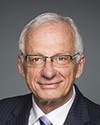The first ÉMIPIC was created in 2015. It is the joint indigenous community policing station, which Captain Durant just told you about.
We are currently in the process of creating a second team in Sept-Îles, on the north shore. It is a partnership between the Innu community of Takuaikan Uashat Mak Mani-Utenam and the Centre intégré de santé et de services sociaux. This team will operate in the city of Sept-Îles, which is right next to the community of Uashat, and will serve the population of Sept-Îles.
When the protocol was signed, the indigenous police force of Uashat was not able to join the project, particularly because of a staff shortage, but it is supposed to join the project in the coming year.
As for the next four ÉMIPICs that will be created, one is in the town of Maniwaki and Barriere Lake, in the Outaouais. We are currently in the process of drafting a protocol agreement with the Sûreté du Québec, the Centre intégré de santé et de services sociaux and the community of Barriere Lake. What makes this team special is that it is a joint team, as my colleague explained earlier. It is made up of police officers and community workers from the Centre intégré de santé et de service sociaux.
However, we will have a second worker join the team, from the indigenous friendship centres of the communities in question. A person from the indigenous friendship centre will be able to support the people of the community of Barriere Lake or Kitigan Zibi, the two communities located next to the town of Maniwaki.
In addition, a fourth person will join the team as an indigenous liaison officer from the community of Barriere Lake. This person will be designated by the band council of Barriere Lake and will assist with the various resources of the community, the band council, the families of vulnerable people and any organization in downtown Maniwaki.
Over the next three years, a team will be created in Roberval, Lac-Saint-Jean. The municipality has a strong indigenous concentration, with members of the Atikamekw community of Opitciwan, but also of the Innu community of Mashteuiatsh. This team will also be based on local realities. We will work in partnership with the Centre intégré de santé et de services sociaux and with the indigenous friendship centre, but also with an indigenous liaison officer from the Atikamekw community or from the Innu community of Mashteuiatsh.
Our goal is really to respond in a safe and culturally-sensitive way, in line with indigenous values and the indigenous way of life.
The third team will be in Chibougamau, also in the north. The team will be based on the same model as the one for the Maniwaki and Roberval teams, but will also be mindful of local specifics. In Chibougamau, there is a high concentration of people from the communities of Oujé-Bougoumou, Mistissini and Waswanipi, which are all Cree nations. Chibougamau also has Atikamekw from Opitciwan.
Once again, we will use the same resources.




